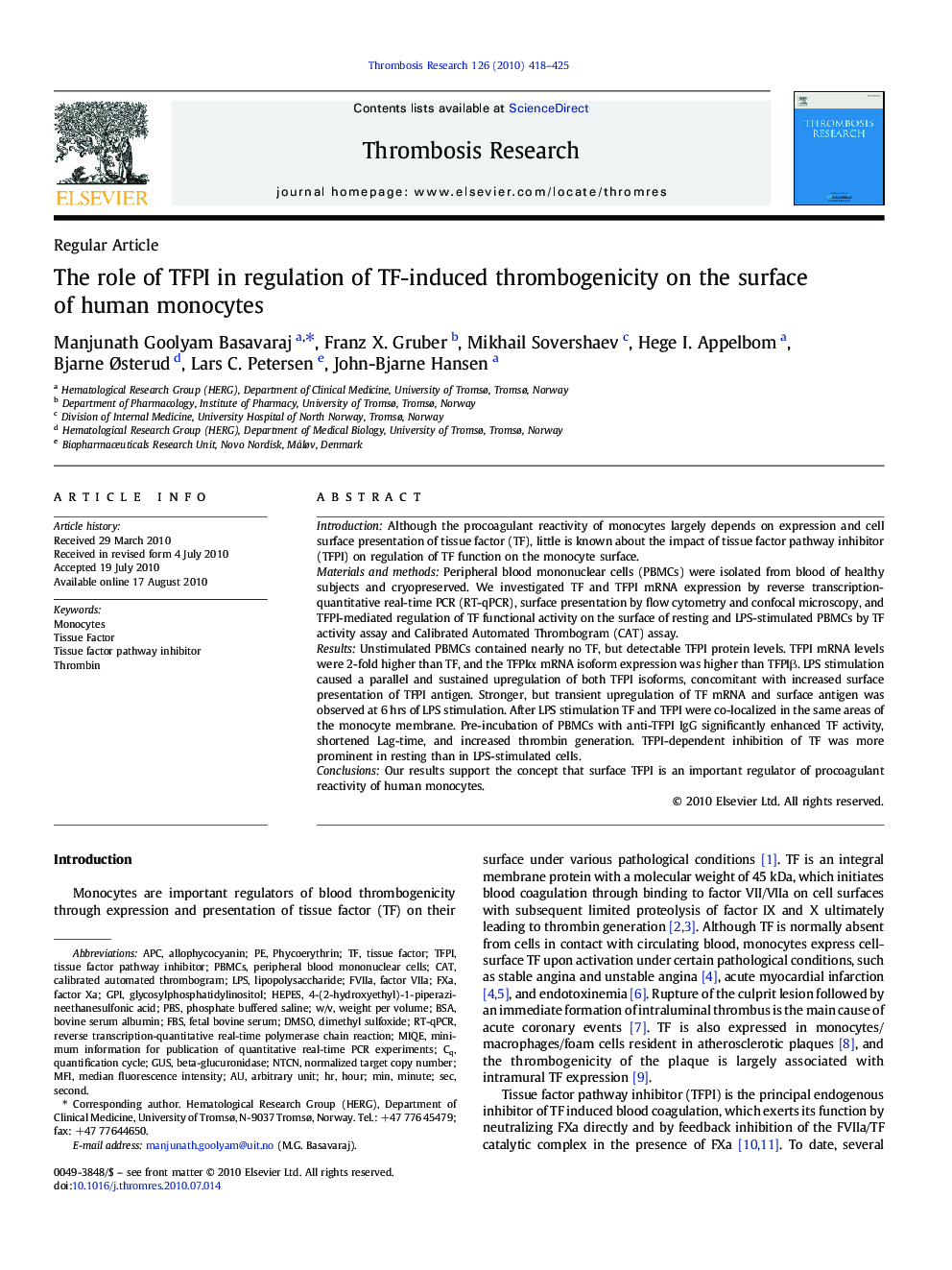| Article ID | Journal | Published Year | Pages | File Type |
|---|---|---|---|---|
| 3029185 | Thrombosis Research | 2010 | 8 Pages |
IntroductionAlthough the procoagulant reactivity of monocytes largely depends on expression and cell surface presentation of tissue factor (TF), little is known about the impact of tissue factor pathway inhibitor (TFPI) on regulation of TF function on the monocyte surface.Materials and methodsPeripheral blood mononuclear cells (PBMCs) were isolated from blood of healthy subjects and cryopreserved. We investigated TF and TFPI mRNA expression by reverse transcription-quantitative real-time PCR (RT-qPCR), surface presentation by flow cytometry and confocal microscopy, and TFPI-mediated regulation of TF functional activity on the surface of resting and LPS-stimulated PBMCs by TF activity assay and Calibrated Automated Thrombogram (CAT) assay.ResultsUnstimulated PBMCs contained nearly no TF, but detectable TFPI protein levels. TFPI mRNA levels were 2-fold higher than TF, and the TFPIα mRNA isoform expression was higher than TFPIβ. LPS stimulation caused a parallel and sustained upregulation of both TFPI isoforms, concomitant with increased surface presentation of TFPI antigen. Stronger, but transient upregulation of TF mRNA and surface antigen was observed at 6 hrs of LPS stimulation. After LPS stimulation TF and TFPI were co-localized in the same areas of the monocyte membrane. Pre-incubation of PBMCs with anti-TFPI IgG significantly enhanced TF activity, shortened Lag-time, and increased thrombin generation. TFPI-dependent inhibition of TF was more prominent in resting than in LPS-stimulated cells.ConclusionsOur results support the concept that surface TFPI is an important regulator of procoagulant reactivity of human monocytes.
